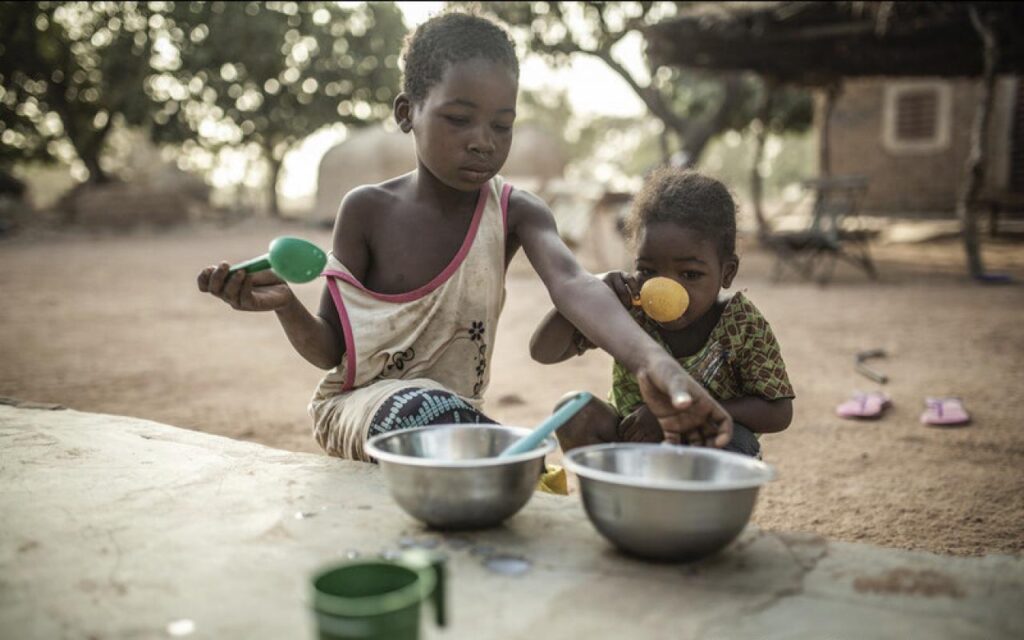Facing a sixth consecutive failed rainy season, countries in the Horn of Africa are staring at the region’s worst drought in at least 70 years. This, research shows, would not have happened without climate change.
As crops fail and livestock dies out, families are being forced to go without food. More than 20 million people now face severe levels of food insecurity in the region, with the onset of flash flooding in Somalia now further complicating the crisis situation. Several East African nations appeared in the recent UN report “Hunger Hotspots”, which identifies countries where food insecurity is particularly severe and likely to deteriorate.
It is imperative to find ways to connect these struggling families to food supplies, both as an urgent response to the current crisis and to build long-term resilience. Food banking is not only one of the most efficient ways to respond to hunger, but it is also a natural extension of the history and culture of giving and support across Africa.
For instance, in the 2022 World Giving Index, Kenya is the second-most generous country in the world, where the cultural tradition of harambee – meaning “all pull together” in Swahili – has long provided a sense of togetherness.
Many other African countries, like Sierra Leone, Zambia, and Nigeria, were also found to be notably generous. According to the index data, people across the continent are especially likely to help out strangers in need of assistance; in Kenya, 77 percent of respondents have helped someone they did not know in the previous year.
Food banking is a natural progression of this tradition where families support those facing difficulties or crises, and they can serve an invaluable role in responding to hunger crises.
First, as nonprofit food distribution organisations, food banks connect highly vulnerable and marginalised communities to much-needed wholesome surplus food. Food Banking Kenya, which was established in 2017, operates a mobile food banking service that has provided food assistance to the communities hit hardest during the drought.
It has not only provided emergency assistance to communities who rely on livestock, but it has also supported them in adopting drought-resistant crop farming practices, which can strengthen their resilience in the face of mounting climate challenges.
Similarly, It Rains Food Bank of Ethiopia – the first formal food bank in the country – is supporting the humanitarian response to the continuing drought by buying and distributing basic food items to support hundreds of Ethiopian households.
Second, food banks help recover food that would otherwise be lost. In Kenya, for example, roughly 40 percent of food produced on farms goes to waste due to poor storage and difficulties getting produce to markets.
Food recovery helps the region’s small-scale farmers, whose livelihoods have been disrupted by the drought. Food banks are based in communities and are locally led, which means that food bankers understand where the needs are greatest and how to get food to people.
Under normal circumstances, food banks act as a much-needed point of connection to get available food to communities facing hunger. Yet, the drought has reversed the situation. Rather than facing high levels of waste, many farmers are now struggling to eke out a living amid total crop failure, loss of livestock, and a lack of water.
Food depots that previously acted as collection centres for the communities are now being used to get food to the farmers whose harvests have been decimated by drought.
Finally, food banks are also helping to build more resilient and food-secure societies for the longer term. For instance, food banks provide support to communities through school feeding programmes, which help children, especially girls, stay in school, where a lack of food would otherwise prevent their attendance.
In Kenya, food bank-led school feeding programmes in Nairobi’s informal settlements are providing meals to nearly 2,000 children daily, giving them access to nutrition and education.
Tied to a tradition of lifting up those who are struggling in communities across Africa, food banks clearly already serve an important role across the continent.
In 2020, members of The Global FoodBanking Network in Africa helped distribute 8.1 million kilograms of food, an increase of 80 percent over the previous year. They also served approximately 1.4 million people.
But the concept of food banking is just beginning to take hold in many parts of Africa. There is a great opportunity to expand the presence of food banks to more communities.
In order to reach more people, food banks need far greater investment, from both the private sector and governmental entities, to help them expand their infrastructure and support better food processing and preservation methods to minimise food waste.
Governments and the private sector can also support food banks by working more closely with them, helping build community awareness of their value and their role in reducing food loss and waste, particularly as food banks rely on local businesses and other partners to procure food.
With more investment, food banks can reach more people facing the current drought as well as other sudden disasters. Over time, leveraging the deep tradition of mutual assistance in the region, they can also become a crucial pillar in building a more food-secure future for all of Africa.
Source : Al Jazeera


